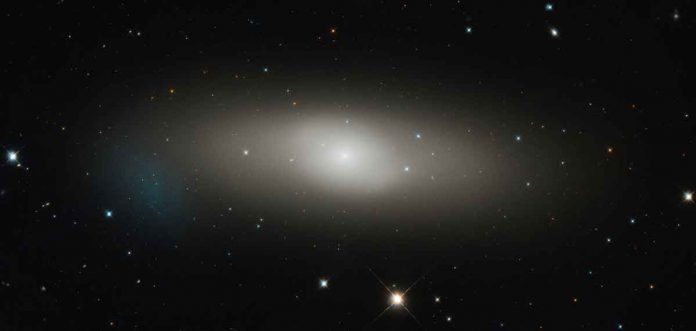This new NASA Hubble Space Telescope image looks at one of the nearest and massive lenticular galaxies to Earth. The name of this galaxy is NGC 1023 which is some 36 million light-years away. Lenticular galaxies get their names from their edge-on appearance that resembles a lens. They are intermediate galaxies between ellipticals and spirals. Lenticular galaxies have a large central bulge and a flattened disk like spirals. But they have no spiral arms. Lenticular galaxies don’t have much gas and dust like ellipticals. But lenticular galaxies have mainly old stars.
NGC 1023 is not alone in this image. The fuzzy blue patch to the lower left of the galaxy is NGC 1023a. It is an irregular satellite galaxy of its large lenticular neighbour. The galaxy pair was part of a study that looked at multiple star systems and star clusters in galaxies beyond our own Milky Way. The researchers found 81 long-lived open star clusters in NGC 1023’s disk as well as 27 young blue star clusters. Half of the young blue star clusters are associated with the satellite galaxy. The rest are spatially associated with the neutral hydrogen gas that surrounds the large lenticular galaxy.
The image uses data from Hubble’s Advanced Camera for Surveys. Additional gap-filling data provided by the Pan-STARRS collaboration. The colour blue represents visible blue light while the colour orange represents near infrared light.

